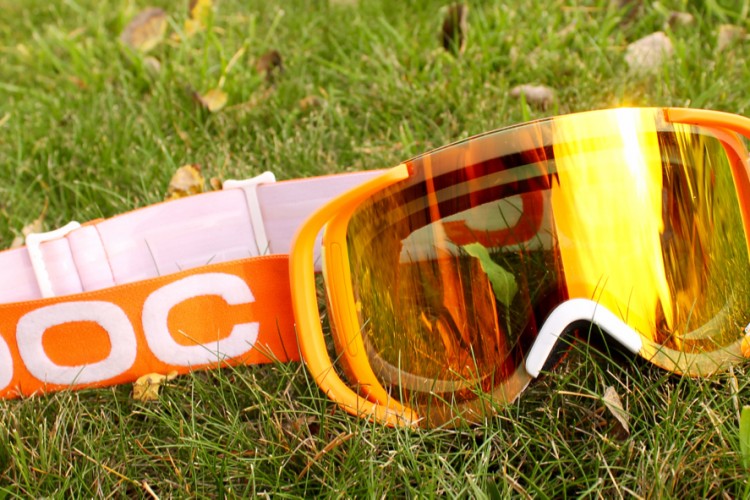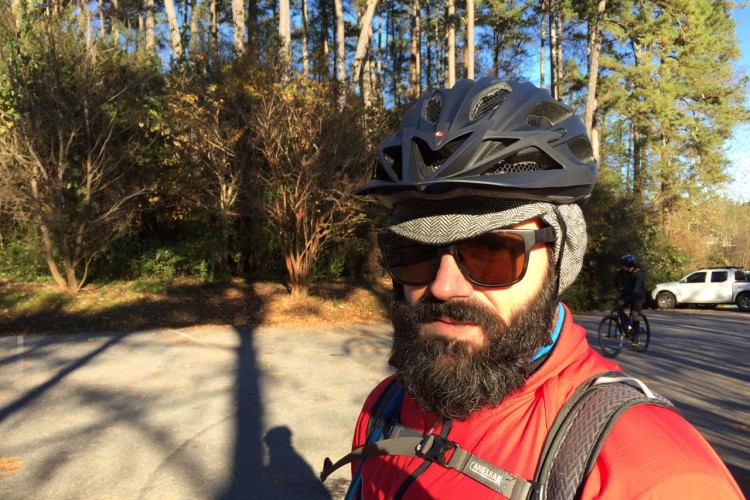Since I am always looking for new and exciting things to try out on the trail, I talked the guys at POC into sending me the new Crane helmet and Cornea Flow goggles to put to the test.
Crane Helmet: Specs
The Crane is a hybrid of sorts. Not really a DJ lid, not really a Trail / XC lid, it falls somewhere in between the two. This helmet is designed for multiple uses; I could even see Enduro riders choosing this as an alternative to a full face helmet. With that in mind, a bit more had to be done to make this a tough and durable yet lightweight helmet.
DJ helmets typically have a hard shell made of plastic (ABS) with an EPS liner but the Crane uses an EPS sandwich construction that combines two densities of foam to keep it lightweight and increase the energy-absorbing properties.
The outer shell is stiffer than other in-mold liners. It uses a vacuum-formed polycarbonate shell (1 mm thick), making it 50% more resistant to dents compared to normal in-mold helmets. The inner foam against your head is for small, quick falls/crashes or lower energy impacts while the outer, denser layer is for more serious or high-energy impact. The two layers work together to give a progressive stop of the head during impact, and the slightly thicker shell (compared to normal in-mold designs) offers increased durability. The two layers are specially formed to add to the progressive nature of the helmet’s impact curve.
There was a lot of attention to detail put into the design of the Crane. The bottom edging that surrounds the helmet covers the otherwise naked foam/shell interface. Molded-in strap hoops make for a neater interface for the chin strap. The design also offers a low profile and lightweight system, with adequate breathability for this helmet type. A total of ten vents and some small interior channels allow for reasonable airflow.
Crane Helmet: Impressions
I did say the Crane is designed for an Enduro rider and, that being said, you’re getting more protection (closer to a DJ-level helmet) and less venting. So yes, the Crane runs a bit on the hotter side of things. I received my Crane back in January and used it mostly indoors, with temperatures of 15°C / 59°F. At those temps all was fine. I could see it getting a bit warmer on extended climbs, however.
On my outdoor rides I rather enjoyed the closed feeling compared to other helmets I have used in the past. The big thing I liked about the Crane is the ability to use either goggles or sunglasses. The back of the helmet allows for a strap to easily go around.
If you are planning on goggles over sunglasses you will need a pair that have silicon grip strips on the inside to prevent the strap from sliding on the Crane.
Speaking of goggles, I matched the Crane with another really nice POC product, the Cornea Flow goggles (more on these below). Using both together is a perfect match, unlike the use of a pair of sunglasses which still makes my eyes water at times. With a nice pair of goggles, you can really give your favorite bike a rip and have totally clear vision. The added protection of goggles also keeps your eyes and face securely out of harm’s way.
Overall I thought the new Crane is a step forward in helmet construction for POC.
If I could complain about anything on the Crane, it is that the ratchet required two hands for operation when releasing tension. Another thing I would have liked to see is a third anchor point to allow the retention pads to lower a bit more. The thin, removable padding held up well, but a second set a bit thicker would have been a nice addition for further customization and better fit. I had someone else try the helmet and they felt a bit more side padding would have been nice too.
With all helmets, it’s best to try before you buy. Bring your other gear too (glasses or goggles) to ensure any helmet you’re considering fits.
Cornea Flow Goggles: Specs
I mentioned earlier that I also received a pair of goggles from POC. The Cornea Flow are not new for this year, but they’re definitely worth talking about! The Cornea Flow are all about fit and comfort. To start, the frame is a fully-vented outrigger design, making these goggles compatible with FF helmets. The vents themselves are all protected from dust entry with a foam filter. A comfortable dual-density foam gasket topped off with a Coolmax facefoam ring wicks moisture away.
The frameless design allows for a better field of view. The lens itself is a laminated cylindrical design using a Cellulose Propionate (CP) inner layer (preventing fog) and a Polycarbonate PC layer for strength, durability, and optical clarity. Holding things firmly in place is the POC strap, which adjusts easily and stays firmly put in place with two wide beads of silicon.
Cornea Flow Goggles: Impressions
I was rather impressed with the POC Cornea Flow goggles: the fit and finish of the Flow is hard to beat! Looking through them you have a not-so-dark tint. Everything turns a slight orange in appearance with good definition between light and dark.
The big sell on these is fit. They do fit wonderfully, with even pressure around the face and a slight bit of extra pressure along the nose bridge, which lessens with consequent usage. As I stated before, they work well with open face helmets. They also work well with full face helmets. In fact, using a full face with a visor helped reduce a slight bit of glare that I experienced from light refracting through the two layers of the lens.
Bottom Line
These are two premium, well-conceived products from POC. They can be used together or separately with good results.
Both products work with other brands as well. The POC Crane easily meshes with Giro and Oakley products. Likewise, the Cornea Flow plays well with products from Kali, THE, and Giro helmets. If you’re considering entering the Enduro world of riding, you may just want to check out POC for these and other safety-related items.
Crane Helmet MSRP: $120.
Cornea Flow Goggles MSRP: $160.
A big thanks to the folks at POC for sending down the gear for review!



























0 Comments